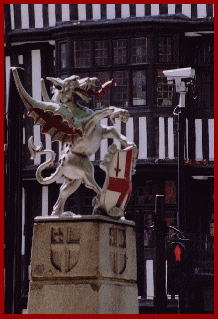| ||||||||||||||||||||||||||||||
Welcome to the | ||||||||||||||||||||||||||||||
 | ||||||||||||||||||||||||||||||
 | ||||||||||||||||||||||||||||||
The complete A to Z ... | ||||||||||||||||||||||||||||||
Apart from providing a generally reliable and inherently secure method of transmitting CCTV signals, there are a few important points to consider with optical fibre. Unlike copper cable which can be cut and joined, and basically fiddled with till the cows come home, optical fibres do not like to be messed around; in fact, they don’t like sharp bends, excessive heat, or any one of a dozen other forms of mistreatment. Treat your fibres with respect, and they’ll serve you forever ... ish. It's important to realise that every time you cut and splice a fibre or fit a connector, there is a penalty in terms of signal loss, although in practice, to some degree the same could also be said for copper cable. When fitting a fibre optic connector (such as an Amphenol 905) historically, the standard technique was known as ‘pot ‘n polish’. The raw fibre has to be glued in to the connector, using a very high quality epoxy or 'hot melt' resin. The surplus fibre is then gently parted off with a diamond tipped tool whilst viewing through a low power microscope, and the residue carefully polished away. The old hand polishing process is actually very laborious with as many as half a dozen different grades of special ‘lanishing’ film (a type of extremely fine 'sandpaper') being used to gently scrape away the unwanted glue and fibre, until a perfectly flat highly transmissive surface is left, on the front of an optical strand measured in tens of microns. The last time Doktor Jon terminated fifty fibre connectors in one go, it took four weeks to get his sight back to normal, and that’s not brilliant at the best of times! With modern engineering techniques, larger scale installations rely on fusion welding to produce a highly conductive, minimal loss joint. One particular problem with optical fibres is what do you do on a five kilometre cable run, if you suddenly find a break has occured. Using an advanced measuring device called an Optical Time Domain Reflectometer (OTDR), a pulse of light is sent down the fibre, and using highly accurate timing circuits, a reading can be made of the approximate distance to the break. It works on the principle of measuring the exact time taken for the light to reflect back from the cut end, at the precise break point in the fibre. All in all, if you treat fibres with respect, it is perhaps the most useful and flexible (not literally!) transmission medium available, after boring old copper, and that’s saying something. | ||||||||||||||||||||||||||||||
 | ||||||||||||||||||||||||||||||
IMPORTANT: No material may be reproduced, copied or redistributed from this site, © doktorjon.co.uk 2004 - 2008 Homepage...:...Gateway...:...Technical Gateway....:....Quickfind Index....:....Equipment Directory | ||||||||||||||||||||||||||||||

